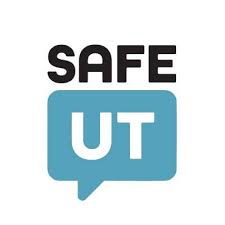Suicide
Emergency Resources
If you or someone you know is currently experiencing suicidal thoughts and need help, please reach out to one of the following resources:
988 Suicide & Crisis Lifeline - Call. Text. Chat. (988lifeline.org) National 24-Hour Crisis Line
SafeUT | Crisis Chat and Tip Line
Text CONNECT to 741741 | FREE Help for Depression | Crisis Text Line
- BIPOC Text “STEVE” to 741-741
- En Espanol, Envia un mensaje de texto con la palabra AYUDA al 741-741
24/7 Suicide Hotline for LGBTQ Youth - We’re here for you Now (thetrevorproject.org) (LGBT+ Text “START” to 678-678 or call 1-866-488-7386)
Veteran's Crisis Line (Veterans text 838-255, or call 988, then press 1) - You do not need to be enrolled in VA benefits to connect.
Understanding and Addressing Suicide
Suicide is death caused by injuring oneself with the intent to die. A suicide attempt is when someone harms themselves with any intent to end their life, but they do not die due to their actions. Every suicide is a tragedy that affects families, communities, and entire countries and often has long-lasting impacts on the people left behind. In 2019, suicide was the fourth leading cause of death among 15-29 year-olds globally. In the State of Utah, suicide is the ninth leading cause of death overall, leading to the loss of more than 900 lives annually or 20 for every 100,000.
Suicide affects people from all backgrounds and demographics. Although women are three times more likely to attempt suicide, men are more likely to complete it. In the United States, individuals of White descent have a higher per capita suicide rate compared to other racial and ethnic groups. Additionally, lesbian, gay, bisexual, and transgender individuals are at significantly higher risks of suicide comparatively. Suicide is a concern across all age groups, with senior citizens being particularly vulnerable, while suicide rates among middle-aged individuals and adolescents/young adults are on the rise.
It’s crucial to recognize that many individuals who attempt or complete suicide are dealing with untreated or under-treated mental health issues. Suicide is most often associated with conditions like major depressive disorder. Other mental health issues that elevate the risk of suicide include bipolar disorder, post-traumatic stress disorder, borderline personality disorder, and schizophrenia.
Warning Signs
Most people who are thinking of ending their lives will communicate their intent in some fashion. Sometimes, an individual in suicidal crisis will express their risk verbally, with words such as “I just can’t go on” or “I wish I were dead.” Often times, however, we must be watchful for signs in their mood, behavior, or circumstances. Any of the following could be potential warning signs for suicide:
- Excessive sadness or moodiness
- Withdrawal from family and friends
- Feelings of hopelessness or helplessness
- Strong anger or rage
- Feelings of being trapped -- like there is no way out of a situation
- Excessive guilt or shame
- Severe mood changes, including a sharp rise in mood after a period of depression
- Drug or alcohol abuse, or relapse after a period of recovery
- Recent release from psychiatric hospitalization
- Change in personality and/or appearance
- Impulsive or reckless behaviors
- Loss of interest in most activities
- History of at least one previous suicide attempt
- Change in sleeping habits
- Changes in appetite, eating patterns, or weight
- Poor work or school performance
- Giving away prized possessions or putting personal affairs in order
- Acquiring a gun or stockpiling pills
- Change in level of spiritual interest/disinterest
- Recent disappointment or rejection (e.g. relationship breakup, job loss)
- Family problems
- Financial problems
- Victimization (emotional, physical or sexual abuse)
- Death of a close friend or family member, especially if by suicide
- Serious or terminal illness, fear of becoming a burden to others
What do I do if I recognize warning signs of suicide?
- Ask Directly: Approach the person and ask directly if they are thinking about suicide. Do not hesitate to use the words "suicide" or "kill yourself."
- Listen Compassionately: Offer a non-judgmental, compassionate ear. Simply listening communicates care and can be healing in itself. Allow the individual to express their thoughts and feelings without interruption or judgment.
- Explore Support Systems: Inquire about the person's support system, including friends, family, counselors, religious leaders, or any other individuals who could provide assistance.
- Provide Reassurance: Avoid arguing with the person. Instead, reassure them that their challenges are temporary and solvable. Express your willingness to help and support them through the difficulties they are facing.
- Encourage Professional Help: Recommend that the individual seek professional assistance. If possible, help them access mental health services, such as counseling or therapy, to address their concerns.
- Do Not Leave Them Alone: Stay with the person and offer your presence. If necessary, seek help from friends or family members to provide additional support and ensure the individual's safety.
- Contact Crisis Hotlines: If you need assistance or guidance, consider calling a 24-hour suicide crisis hotline. Call or text 988 or one of the crisis numbers listed above. Trained professionals are available to provide guidance and support.
- Immediate Danger: If you believe the person is in immediate danger, do not hesitate to call 911 or take them to the nearest emergency room. Safety is the top priority in such situations.
Preventing Suicide
Understanding Risk Factors:
Recognizing Signs of Depression and Mental Health Issues:
Identifying Warning Signs for Suicide:
Understanding Risk Factors:
What NOT to say to someone who is suicidal
It’s essential to approach someone who is suicidal with empathy and care, avoiding statements that may inadvertently dismiss their feelings or exacerbate their distress. Here are some phrases to avoid:
- “It’s not that bad”: Minimizing the severity of their feelings or problems can be invalidating and make the person feel unheard. To them, the distress is very real, and it’s essential to acknowledge their pain.
- “Just snap out of it”: Mental health issues leading to suicidality are complex and not easily overcome. Asking someone to “snap out of it” oversimplifies their struggles. Encouraging professional treatment and support is more appropriate.
- “Don’t do anything stupid”: Labeling their thoughts as “stupid” can be harmful. To a person contemplating suicide, their plan may seem like a logical solution to end their pain. Instead, express concern for their well-being and encourage them to seek help and support.
In conversations with a person experiencing suicidal thoughts, it’s vital to offer empathy, a listening ear, and assistance in connecting with mental health professionals. Encouraging them to seek treatment, acknowledging their pain, and showing genuine care can be immensely helpful in providing the support they need.
Resources
- 988 Suicide & Crisis Lifeline - Call. Text. Chat. (988lifeline.org)
- SafeUT | Crisis Chat and Tip Line
- Crisis Text Line | Text HOME To 741741 free, 24/7 Crisis Counseling
- The Trevor Project | For Young LGBTQ Lives
- Home (veteranscrisisline.net)
- Suicide Prevention | Suicide | CDC
- Home | NAMI: National Alliance on Mental Illness
- Youth Suicide Prevention - It's OK 2 ASK (ncdhhs.gov)
- American Foundation for Suicide Prevention (AFSP)
- Therapy Assistance Online (TAO)





